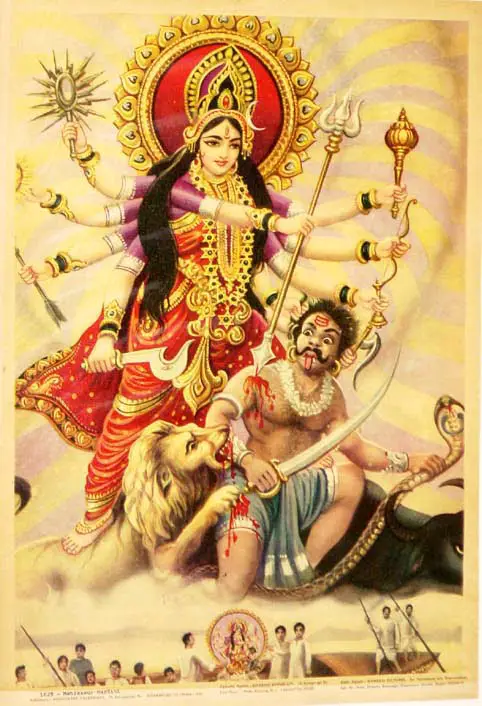Sthothram means “ode, eulogy, or a hymn of praise.”
Hindu mythology is full of epic tales, and one such fascinating story is that of Mahishasura Marddini – the slayer of the demon Mahishasura. The tale of this powerful Hindu goddess, Durga, has been passed down for centuries, and it continues to fascinate people to this day. In this article, we will take a closer look at the epic tale of Mahishasura Marddini and trace the narrative history of the goddess Durga.
The Mythical Mahishasura Marddini: An Epic Tale Unveiled
The story of Mahishasura Marddini is said to have originated in ancient India. It revolves around the demon king Mahishasura, who had obtained a boon from Lord Brahma that made him invincible. With his newfound power, Mahishasura began to wreak havoc in the world, and the gods, unable to defeat him, sought help from the divine Trinity – Brahma, Vishnu, and Mahesh.
The Trinity then created a powerful female warrior, Durga, who was bestowed with divine weapons from the gods. Riding a lion, she set out to battle Mahishasura and his army of demons. The battle between Mahishasura and Durga lasted for nine days, during which Durga defeated Mahishasura and his army, thus restoring peace to the world.
The tale of Mahishasura Marddini is not just a story of good triumphing over evil. It is also a tale of the power of feminine energy, as Durga embodies the fierce and protective nature of a mother who will go to any lengths to protect her children. The story has become a symbol of the triumph of righteousness over injustice and is celebrated every year during the festival of Navratri.
Tracing the Narrative History of the Hindu Goddess Durga
The origins of the goddess Durga can be traced back to the Indus Valley Civilization, where she was worshipped as a mother goddess. Over time, she came to be associated with different aspects of Hindu mythology, and her story evolved to include various forms and incarnations.
In the Puranas, Durga is portrayed as an incarnation of the goddess Parvati, the consort of Lord Shiva. She is depicted as a warrior goddess who defeated demons and protected the gods. The Mahishasura Marddini story is one of the most popular tales associated with Durga and has been passed down through generations.
The story of Durga and Mahishasura Marddini has also been depicted in various art forms, including paintings, sculptures, and dance forms. The most famous of these is the Durga Puja festival, celebrated in West Bengal, where elaborate pandals are created to depict scenes from the Mahishasura Marddini story.
As Durga evolved over time, she came to be associated with different aspects of Hindu mythology, including Lakshmi (goddess of wealth), Saraswati (goddess of learning), and Kali (goddess of darkness and destruction). Each form of Durga has a unique story and symbolism.
The worship of Durga is also associated with nature and the cycles of life and death. She is viewed as a force of change and transformation that can help individuals overcome obstacles and grow spiritually. Her story and symbolism have inspired countless devotees over the centuries, and her worship remains an integral part of Hindu culture and tradition.
In conclusion, the epic tale of Mahishasura Marddini and the narrative history of the goddess Durga have been a source of inspiration and fascination for generations. The story is not just about good triumphing over evil, but also about the power of feminine energy and the transformative nature of change. As we continue to celebrate and worship Durga, her story and symbolism will continue to inspire us for years to come.
Hindu mythology is full of stories that continue to captivate and inspire people to this day. The tale of Mahishasura Marddini and the story of Durga are just two examples of the rich narrative history of this ancient religion. As we continue to explore and appreciate these stories, we can gain a deeper understanding of the values and beliefs that have shaped Hindu culture for centuries.

